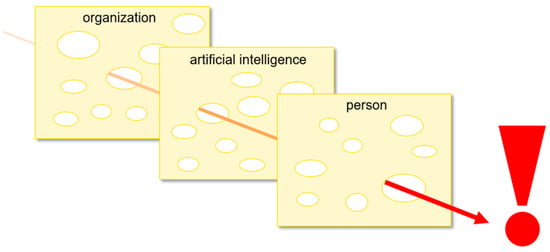The synthesis, antioxidant capacity, and anti-inflammatory activity of four novel
N-benzyl-2-[4-(aryl)-1
H-1,2,3-triazol-1-yl]ethan-1-imine oxides
10a–
d are reported herein. The nitrones
10a–
d were tested for their antioxidant properties and their ability to inhibit soybean lipoxygenase (LOX). Four diverse antioxidant
[...] Read more.
The synthesis, antioxidant capacity, and anti-inflammatory activity of four novel
N-benzyl-2-[4-(aryl)-1
H-1,2,3-triazol-1-yl]ethan-1-imine oxides
10a–
d are reported herein. The nitrones
10a–
d were tested for their antioxidant properties and their ability to inhibit soybean lipoxygenase (LOX). Four diverse antioxidant tests were used for in vitro antioxidant assays, namely, interaction with the stable free radical DPPH (1,1-diphenyl-2-picrylhydrazyl radical) as well as with the water-soluble azo compound AAPH (2,2′-azobis(2-amidinopropane) dihydrochloride), competition with DMSO for hydroxyl radicals, and the scavenging of cationic radical ABTS
•+ (2,2′-azino-bis(3-ethylbenzothiazoline-6-sulfonate) radical cation). Nitrones
10b,
10c, and
10d, having the 4-fluorophenyl, 2,4-difluorophenyl, and 4-fluoro-3-methylphenyl motif, respectively, exhibited high interaction with DPPH (64.5–81% after 20 min; 79–96% after 60 min), whereas nitrone
10a with unfunctionalized phenyl group showed the lowest inhibitory potency (57% after 20 min, 78% after 60 min). Nitrones
10a and
10d, decorated with phenyl and 4-fluoro-3-methylphenyl motif, respectively, appeared the most potent inhibitors of lipid peroxidation. The results obtained from radical cation ABTS
•+ were not significant, since all tested compounds
10a–
d showed negligible activity (8–46%), much lower than Trolox (91%). Nitrone
10c, bearing the 2,4-difluorophenyl motif, was found to be the most potent LOX inhibitor (IC
50 = 10 μM).
Full article
 IJMS
IMPACT
IJMS
IMPACT Applied Sciences
IMPACT
Applied Sciences
IMPACT Sustainability
IMPACT
Sustainability
IMPACT Sensors
IMPACT
Sensors
IMPACT JCM
IMPACT
JCM
IMPACT Materials
IMPACT
Materials
IMPACT Molecules
IMPACT
Molecules
IMPACT Energies
IMPACT
Energies
IMPACT Electronics
IMPACT
Electronics
IMPACT Remote Sensing
IMPACT
Remote Sensing
IMPACT Cancers
IMPACT
Cancers
IMPACT Nutrients
IMPACT
Nutrients
IMPACT Mathematics
IMPACT
Mathematics
IMPACT Foods
IMPACT
Foods
IMPACT Buildings
IMPACT
Buildings
IMPACT Polymers
IMPACT
Polymers
IMPACT Animals
IMPACT
Animals
IMPACT Water
IMPACT
Water
IMPACT Plants
IMPACT
Plants
IMPACT Agronomy
IMPACT
Agronomy
IMPACT Biomedicines
IMPACT
Biomedicines
IMPACT Processes
IMPACT
Processes
IMPACT Microorganisms
IMPACT
Microorganisms
IMPACT Diagnostics
IMPACT
Diagnostics
IMPACT Nanomaterials
IMPACT
Nanomaterials
IMPACT Viruses
IMPACT
Viruses
IMPACT Medicina
IMPACT
Medicina
IMPACT Healthcare
IMPACT
Healthcare
IMPACT Cells
IMPACT
Cells
IMPACT Forests
IMPACT
Forests
IMPACT Agriculture
IMPACT
Agriculture
IMPACT Land
IMPACT
Land
IMPACT JMSE
IMPACT
JMSE
IMPACT IJERPH
IJERPH
 Symmetry
IMPACT
Symmetry
IMPACT Genes
IMPACT
Genes
IMPACT Pharmaceutics
IMPACT
Pharmaceutics
IMPACT Coatings
IMPACT
Coatings
IMPACT Micromachines
IMPACT
Micromachines
IMPACT Pharmaceuticals
IMPACT
Pharmaceuticals
IMPACT Atmosphere
IMPACT
Atmosphere
IMPACT Children
IMPACT
Children
IMPACT Religions
IMPACT
Religions
IMPACT Antioxidants
IMPACT
Antioxidants
IMPACT Life
IMPACT
Life
IMPACT Metals
IMPACT
Metals
IMPACT Biomolecules
IMPACT
Biomolecules
IMPACT Vaccines
IMPACT
Vaccines
IMPACT Education Sciences
IMPACT
Education Sciences
IMPACT Minerals
IMPACT
Minerals
IMPACT Horticulturae
IMPACT
Horticulturae
IMPACT Brain Sciences
IMPACT
Brain Sciences
IMPACT JPM
IMPACT
JPM
IMPACT Bioengineering
IMPACT
Bioengineering
IMPACT



























